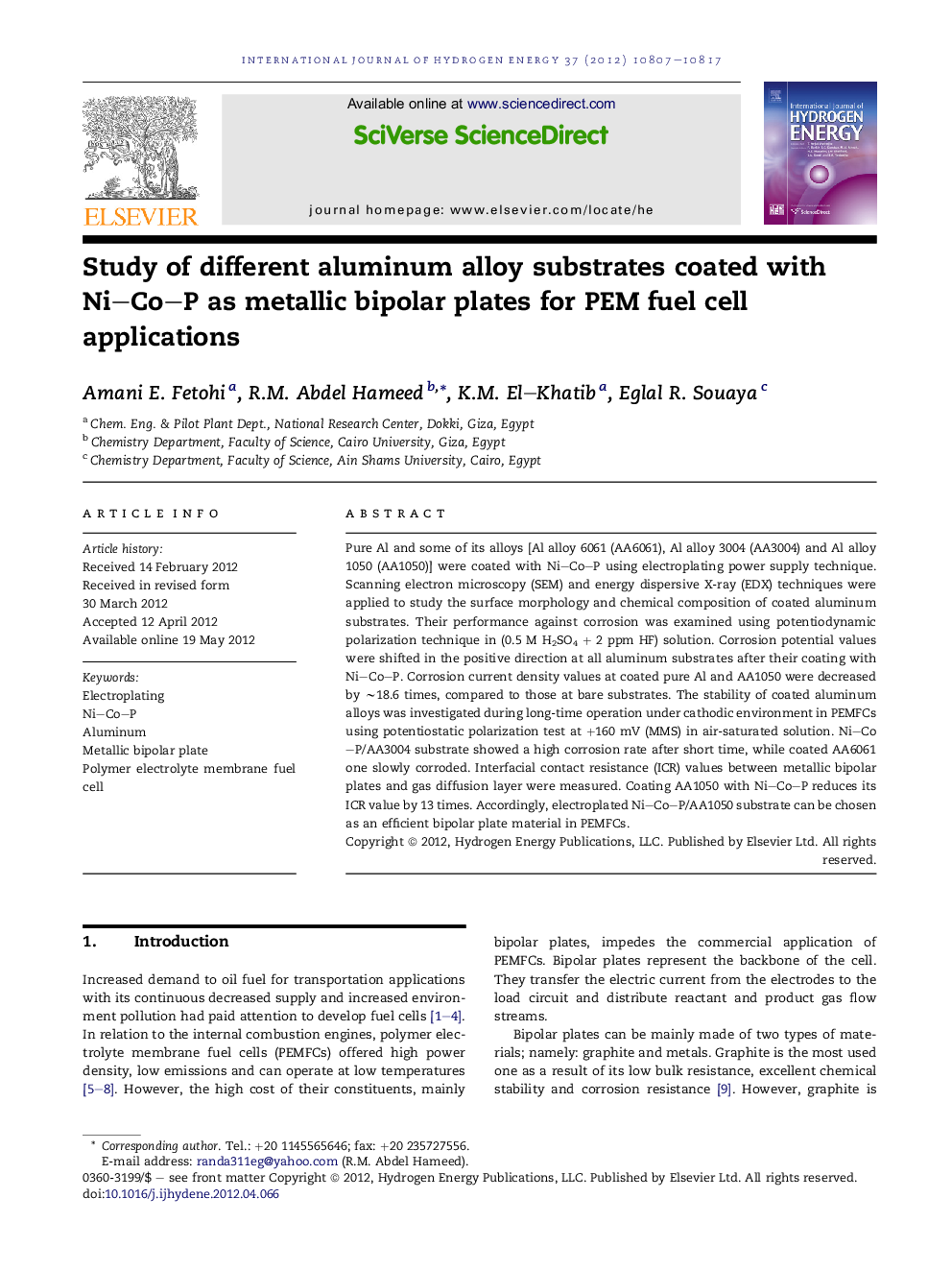| Article ID | Journal | Published Year | Pages | File Type |
|---|---|---|---|---|
| 1276364 | International Journal of Hydrogen Energy | 2012 | 11 Pages |
Pure Al and some of its alloys [Al alloy 6061 (AA6061), Al alloy 3004 (AA3004) and Al alloy 1050 (AA1050)] were coated with Ni–Co–P using electroplating power supply technique. Scanning electron microscopy (SEM) and energy dispersive X-ray (EDX) techniques were applied to study the surface morphology and chemical composition of coated aluminum substrates. Their performance against corrosion was examined using potentiodynamic polarization technique in (0.5 M H2SO4 + 2 ppm HF) solution. Corrosion potential values were shifted in the positive direction at all aluminum substrates after their coating with Ni–Co–P. Corrosion current density values at coated pure Al and AA1050 were decreased by ∼18.6 times, compared to those at bare substrates. The stability of coated aluminum alloys was investigated during long-time operation under cathodic environment in PEMFCs using potentiostatic polarization test at +160 mV (MMS) in air-saturated solution. Ni–Co–P/AA3004 substrate showed a high corrosion rate after short time, while coated AA6061 one slowly corroded. Interfacial contact resistance (ICR) values between metallic bipolar plates and gas diffusion layer were measured. Coating AA1050 with Ni–Co–P reduces its ICR value by 13 times. Accordingly, electroplated Ni–Co–P/AA1050 substrate can be chosen as an efficient bipolar plate material in PEMFCs.
Graphical abstractScanning electron micrograph of AA1050 substrate coated with Ni–Co–P using electroplating power supply technique.Figure optionsDownload full-size imageDownload as PowerPoint slideHighlights► Spherical crystals constitute Ni–Co–P coating at different Al substrates. ► Ni–Co–P coating highly prevents Al and AA1050 against corrosion. ► Ni–Co–P/AA3004 is unstable in simulated PEM environment. ► A superior ICR decrease was achieved at Ni–Co–P/AA1050.
